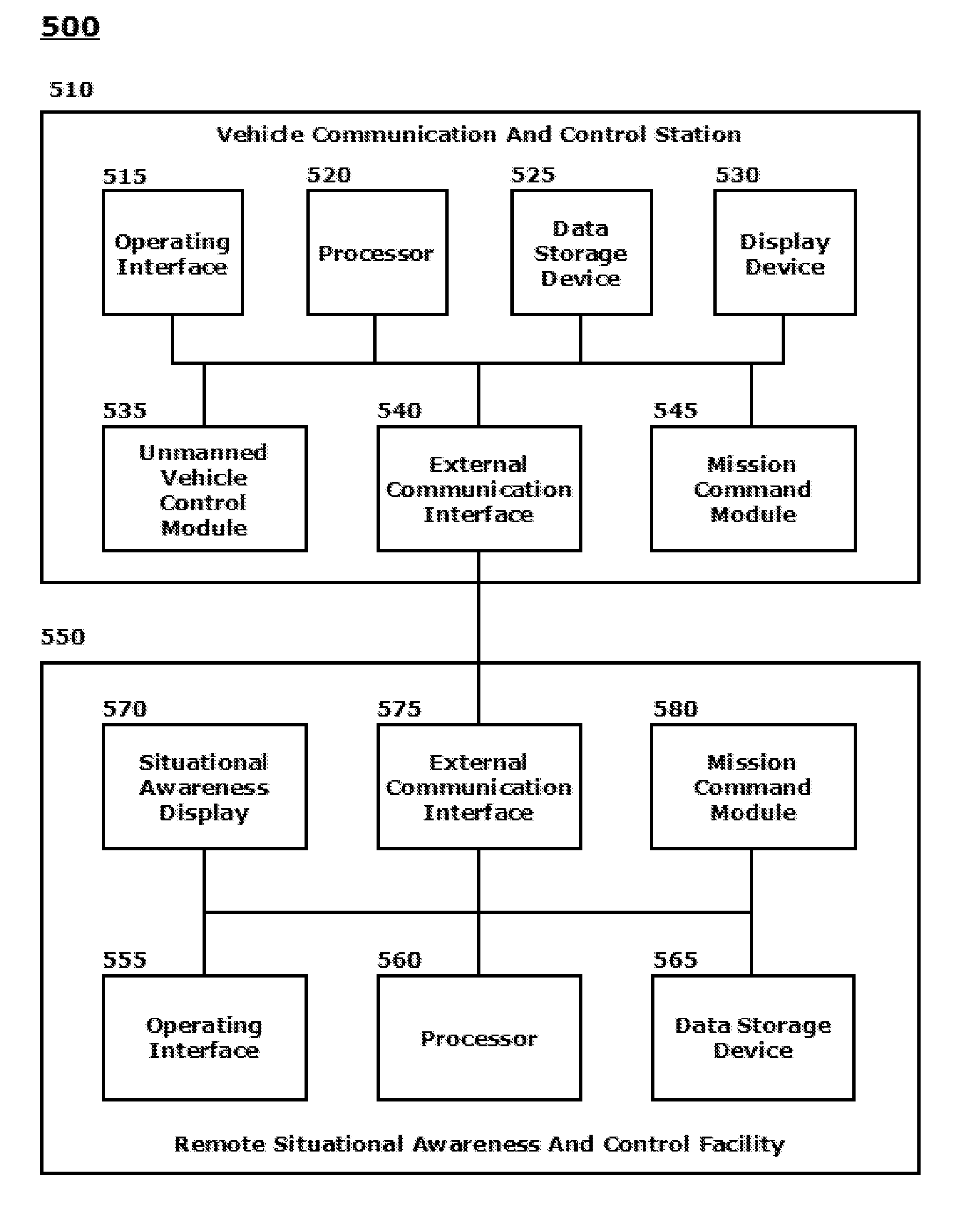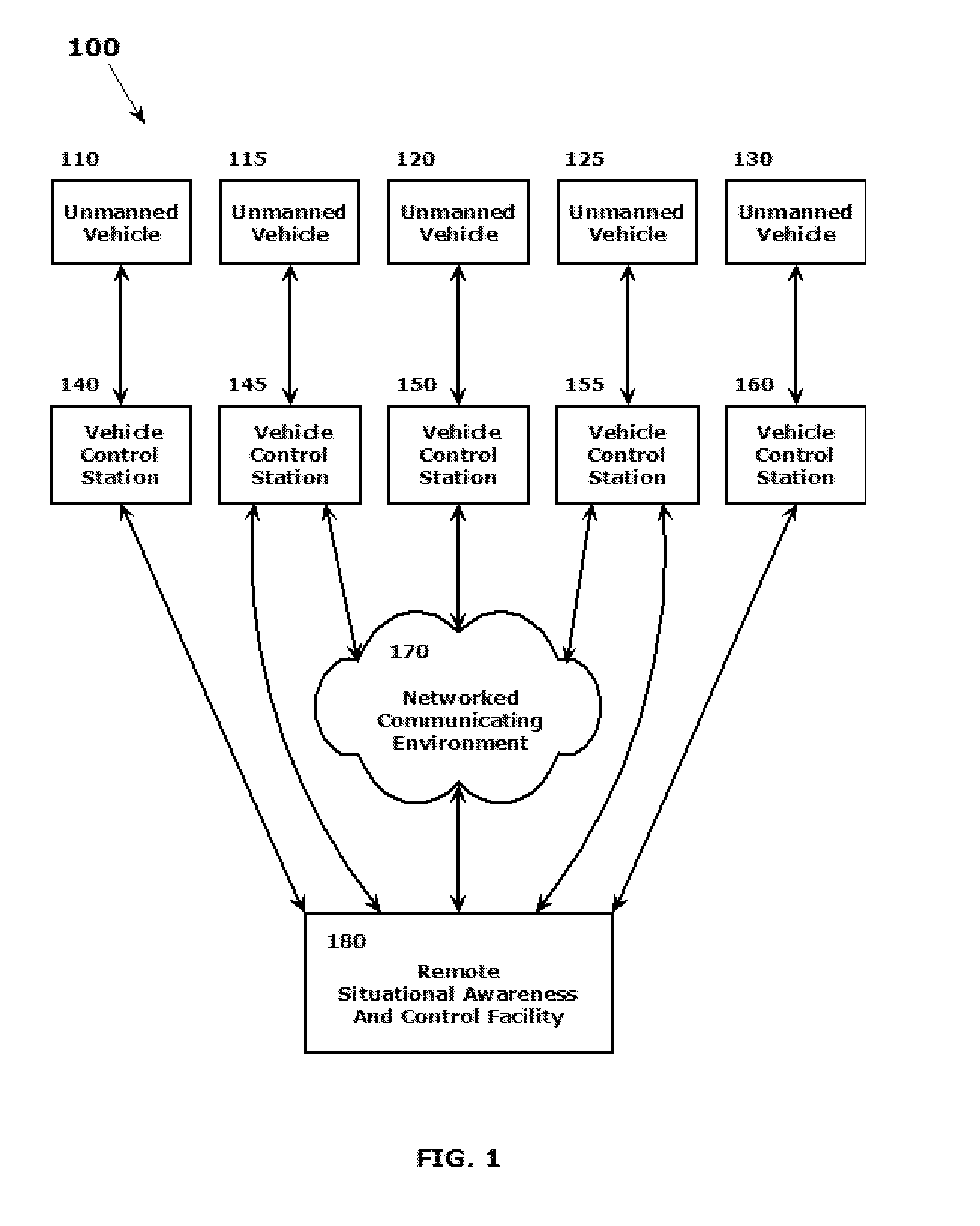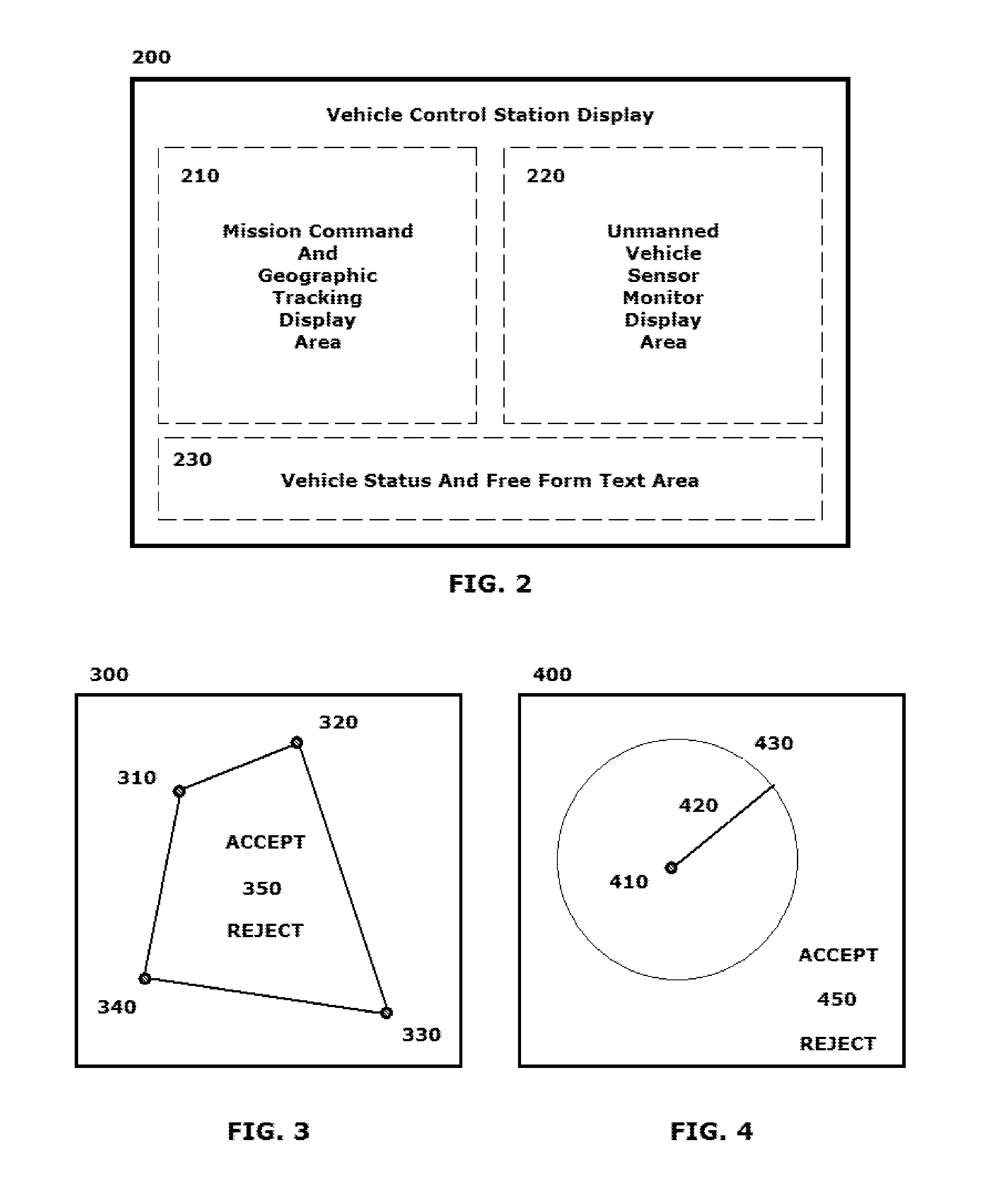Unmanned vehicle mission planning, coordination and collaboration
a technology for unmanned vehicles and mission planning, applied in the direction of aircraft traffic control, process and machine control, instruments, etc., can solve the problems of wildfires that may have difficulty responding to such movement, the local operator of the unmanned vehicle may be generally unconcerned with other operations going on in the area or at other locations, and the rapid movement of the target may outpace the capabilities of even a fairly sophisticated unmanned vehicle, including an suas platform
- Summary
- Abstract
- Description
- Claims
- Application Information
AI Technical Summary
Benefits of technology
Problems solved by technology
Method used
Image
Examples
Embodiment Construction
[0003]This disclosure relates to systems and methods for implementing substantially real-time remote multi-mission tracking and re-tasking for a plurality of locally-operated unmanned vehicles from a central location to provide mission deconfliction and mission modification in an operating environment, including an evolving and moving local operating environment, to more effectively employ the plurality of locally-operated unmanned vehicles.
[0004]2. Related Art
[0005]Deployment scenarios involving unmanned vehicles are increasing as the technology for local and remote control of those vehicles increases and government, law enforcement and other entities become aware of, and comfortable with, the capabilities and benefits of routinely employing certain unmanned vehicles for certain mission types. The term “unmanned vehicles,” as that term will be used throughout this disclosure, is intended to encompass a particular class of locally, generally line-of-sight operated vehicles. Classes ...
PUM
 Login to View More
Login to View More Abstract
Description
Claims
Application Information
 Login to View More
Login to View More - R&D
- Intellectual Property
- Life Sciences
- Materials
- Tech Scout
- Unparalleled Data Quality
- Higher Quality Content
- 60% Fewer Hallucinations
Browse by: Latest US Patents, China's latest patents, Technical Efficacy Thesaurus, Application Domain, Technology Topic, Popular Technical Reports.
© 2025 PatSnap. All rights reserved.Legal|Privacy policy|Modern Slavery Act Transparency Statement|Sitemap|About US| Contact US: help@patsnap.com



